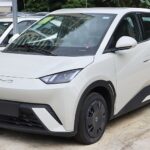Investigating Hydrogen Refueling Stations in Shanghai: Is Hydrogen Commercialization Mature?
In March 2022, the Chinese government released the “Medium and Long-Term Development Plan for the Hydrogen Energy Industry (2021-2035),” with ambitious goals to promote the commercialization and civilian use of hydrogen energy. As policies and regulations pave the way, many automakers have also started to focus on hydrogen energy, which is not an entirely new concept. Toyota, for example, introduced hydrogen fuel cell vehicles in Japan as early as 2012. With this backdrop of technological advancements and policy support, how far has the commercialization of hydrogen energy vehicles progressed, and is it truly mature?
To address these questions, we conducted market research in Shanghai and other areas, aiming to shed light on the current state of hydrogen energy commercialization.
Convenience: Hydrogen Refueling
When it comes to practicality, convenience is paramount. Electric vehicles (EVs) benefited from a parallel development of charging infrastructure and technology, allowing for quick recharges. Hydrogen fuel cell vehicles, in comparison, are known for their rapid refueling. During our investigation, we found that refueling a hydrogen-powered MPV (Multi-Purpose Vehicle) takes only about 3 to 5 minutes, and its refueling efficiency is just 10% to 20% slower than that of refueling gasoline vehicles.
However, the convenience of hydrogen refueling is compromised by the scarcity of refueling stations. In our search for refueling stations in major cities like Beijing, Shanghai, and Guangzhou, we discovered that Shanghai has only 6 stations, Beijing has 5, and Guangzhou has just 4. During our on-site visits, we observed that most stations are located in suburban areas like Jiading and Jinshan. Moreover, the majority of stations are dedicated facilities within industrial parks, with only one conventional refueling station partnership.
Cost and Range Limitations
Cost is another key factor affecting the commercialization of hydrogen energy vehicles. Pricing transparency for refueling is limited, with most stations using prepaid cards based on vehicle data such as pressure, temperature, and remaining range. While the price per kilogram of hydrogen varies, it often translates to a cost per kilometer similar to gasoline. Additionally, the cost of hydrogen fueling may be higher than gasoline for some commercial vehicles, causing some medium-sized truck users to spend around 4 yuan per kilometer on fuel.
Furthermore, there are restrictions on hydrogen refueling pressure. Some hydrogen-powered vehicles are limited to 35 MPa pressure refueling due to regional regulations, while the higher 70 MPa pressure refueling remains unavailable in many areas. This limitation further affects the practicality of hydrogen vehicles.
Limited Vehicle Models
In our investigation, we found that Shanghai has only one hydrogen-powered passenger vehicle model that is commercially operational—the MIFA Hydro by SAIC Maxus. The MIFA Hydro was introduced in September 2022 for ride-hailing purposes and offers a range of around 600 kilometers with a 70 MPa pressure storage capacity of 6.4 kilograms. Other hydrogen vehicle models, such as Chang’an’s Shenlan SL03, Aion LX, and BAIC EU7, have also been introduced but with a relatively high price tag.
Conclusion
In conclusion, the development of hydrogen energy vehicles in China is still in its early stages. The limited number of refueling stations, higher costs, and a lack of comprehensive supporting infrastructure hinder large-scale commercialization. While policies and technology advancements are aligning, it is evident that hydrogen energy’s journey to widespread civilian use is a gradual process. Despite government support and technological progress, the road ahead remains challenging. While hydrogen energy might hold promise for the future, the likelihood of large-scale civilian use within the next two to three years appears limited based on the current landscape.





